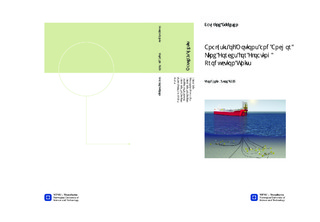Analysis of Motions and Anchor Line Forces for Floating Production Units
Master thesis
Permanent lenke
http://hdl.handle.net/11250/238657Utgivelsesdato
2013Metadata
Vis full innførselSamlinger
- Institutt for marin teknikk [3432]
Sammendrag
The oil industry is expanding its activities into deeper and deeper waters. This creates new challenges in terms of technology and design of floating production units. Floater, mooring lines and risers comprise a dynamic system that respond to environmental loads due to wind, waves and current in a complex way. In deep water, the low-frequent floater motions are significantly influenced by current loading and damping due to the slender structures. These interaction effects become more pronounced as the water depth increases. To achieve accurate predictions of floater motions and mooring line dynamics in deep water, it is essential that the interaction effects are included in the calculations. Two different methods to calculate on moored floaters are presented: the traditional uncoupled analysis and a coupled analysis. The traditional uncoupled analysis is performed in two steps; first the motions of the floater are calculated, then the dynamic responses in the mooring lines and risers are found by using the floater motions from the first step. The main shortcomings with the traditional uncoupled analysis are the neglection or simplification of the current forces and the low-frequency damping contribution from mooring lines and risers. The effect of these shortcomings will normally increase with increasing water depth. In deep water, a coupled analysis is therefore strongly preferred. In a coupled analysis, the floater motions and mooring line and riser dynamics are calculated simultaneously. The interaction effects are then taken into account and the drawbacks from the uncoupled analysis are avoided. Both uncoupled and coupled analyses are performed on a floating production unit. The floater is operating in a water depth of 913.5 metre, which is characterized as ?deep water?. The uncoupled analyses are performed in the programs SIMO and RIFLEX, while the coupled analyses are done in the newly developed software SIMA. The analyses showed that an uncoupled analysis approach overestimates the floater motions and mooring line forces. A coupled analysis should therefore be applied on deep water concepts.
